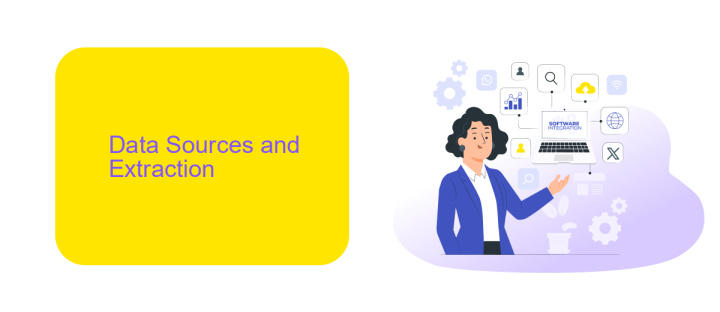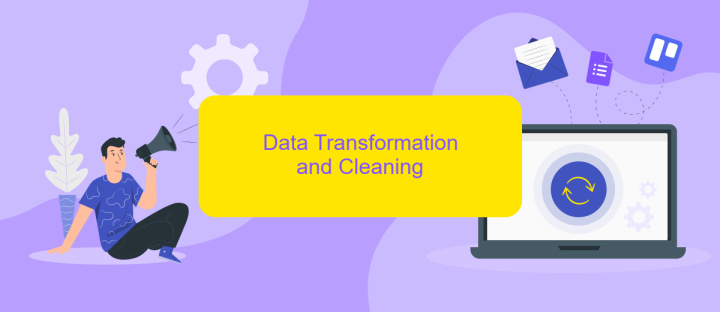BI Data Integration
Business Intelligence (BI) Data Integration is a crucial process that involves combining data from various sources to provide a unified view for analysis and reporting. This integration enables organizations to make informed decisions by ensuring data consistency, improving data quality, and enhancing accessibility. By leveraging BI data integration, companies can unlock valuable insights, streamline operations, and drive strategic growth.
Introduction
Business Intelligence (BI) Data Integration is a critical process that enables organizations to combine data from various sources into a unified view. This integration is essential for making informed business decisions, as it ensures data consistency, accuracy, and accessibility. By integrating data, businesses can leverage comprehensive insights to drive growth and efficiency.
- Combining data from multiple sources
- Ensuring data consistency and accuracy
- Enhancing data accessibility
- Facilitating informed decision-making
One of the tools that can significantly streamline the data integration process is ApiX-Drive. This service allows for easy and automated data transfers between different systems, reducing the manual effort involved. With ApiX-Drive, businesses can set up integrations quickly and efficiently, ensuring that their BI systems are always up-to-date with the latest data. This ultimately leads to more accurate analytics and better business outcomes.
Data Sources and Extraction

Data sources for BI integration can vary widely, including databases, cloud services, flat files, and APIs. Each source type has its unique characteristics, making it essential to choose the right tools for extraction. For instance, databases might require SQL queries for data retrieval, while cloud services often provide RESTful APIs. Flat files like CSVs or Excel spreadsheets are typically imported directly using ETL (Extract, Transform, Load) tools. The goal is to ensure that the data extracted is accurate, timely, and relevant for the business intelligence needs.
One effective way to manage data extraction is through automated integration services like ApiX-Drive. This platform allows users to connect various data sources effortlessly, automating the extraction process. ApiX-Drive supports a wide range of integrations, from CRM systems to social media platforms, ensuring seamless data flow. By utilizing such services, businesses can significantly reduce the manual effort involved in data extraction, thereby increasing efficiency and minimizing errors. This enables more time to be spent on data analysis and decision-making, rather than on the complexities of data integration.
Data Transformation and Cleaning

Data transformation and cleaning are crucial steps in ensuring the quality and usability of integrated BI data. These processes involve converting raw data into a consistent format and removing any inaccuracies, duplicates, or irrelevant information that could skew analysis.
- Identify and remove duplicate records to prevent data redundancy.
- Standardize data formats for consistency across datasets.
- Validate data accuracy by checking for errors and inconsistencies.
- Enrich data by integrating additional information from reliable sources.
- Utilize tools like ApiX-Drive to automate and streamline these processes.
Effective data transformation and cleaning enhance the reliability of BI insights, enabling more accurate decision-making. Leveraging automated solutions such as ApiX-Drive can significantly reduce the time and effort required, ensuring that your data is always up-to-date and accurate.
Data Integration and Modeling

Data integration is a crucial step in the process of business intelligence (BI), allowing organizations to combine data from various sources into a unified view. This integration enables more comprehensive analysis and better decision-making. Effective data integration ensures that data is accurate, consistent, and accessible, which is essential for building reliable BI models.
One of the key challenges in data integration is managing the diverse formats and structures of data. Tools like ApiX-Drive can simplify this process by automating the integration of data from multiple platforms and applications. ApiX-Drive allows users to set up integrations without needing extensive technical knowledge, making it easier to maintain data consistency and accuracy.
- Automated data synchronization
- Support for multiple data sources
- User-friendly interface
- Real-time data updates
Once data is integrated, the next step is data modeling, which involves organizing and structuring the data to support analytical queries. Effective data modeling helps in creating a logical framework that represents the relationships between different data entities. This framework is crucial for generating meaningful insights and supporting strategic business decisions.
Data Governance and Management
Data governance and management are critical components in the realm of BI data integration. Effective governance ensures that data is accurate, consistent, and secure, while management focuses on the proper handling and utilization of data throughout its lifecycle. Establishing clear policies, roles, and responsibilities is essential to maintain data quality and compliance with regulatory requirements. Organizations must implement robust data governance frameworks to mitigate risks and enhance decision-making processes.
To streamline data integration, tools like ApiX-Drive can be invaluable. ApiX-Drive facilitates the seamless connection of various data sources, enabling automated data transfers and reducing the manual effort required for integration. By leveraging such services, businesses can ensure that their data is up-to-date and readily available for analysis. This not only improves operational efficiency but also supports the governance framework by maintaining data integrity and traceability across different systems.
FAQ
What is BI Data Integration?
Why is BI Data Integration important?
What are some common challenges in BI Data Integration?
How can I automate BI Data Integration processes?
What should I consider when choosing a BI Data Integration tool?
Apix-Drive is a simple and efficient system connector that will help you automate routine tasks and optimize business processes. You can save time and money, direct these resources to more important purposes. Test ApiX-Drive and make sure that this tool will relieve your employees and after 5 minutes of settings your business will start working faster.

